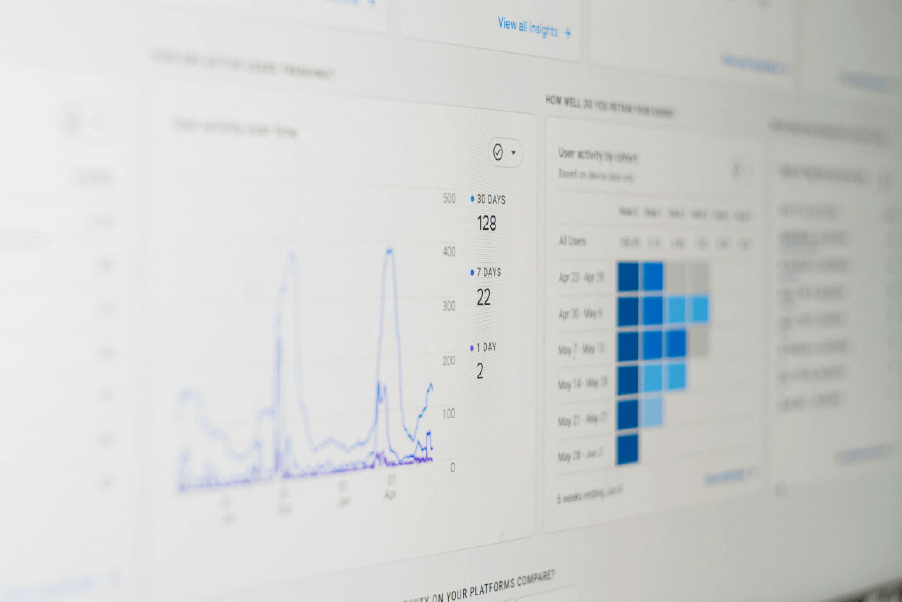In today’s digital environment, it’s essential to know which metrics to track to improve your website’s SEO. With so many data points to monitor, it’s easy to get bogged down in reports that don’t impact your bottom line.
By focusing on key SEO metrics, including key performance indicators, you can understand how your website is performing and make data-driven decisions to improve search visibility, engagement, and conversion rates.
In this guide, we’ll cover the top 8 SEO metrics you should be tracking to optimize your website’s performance and stay ahead of the latest search engine algorithm updates.

Understanding SEO metrics is crucial for measuring the success of your SEO efforts. These metrics provide valuable insights into your website’s performance, helping you identify areas for improvement and optimize your SEO strategy.
By tracking the right SEO metrics, you can gain a deeper understanding of your website’s strengths and weaknesses, and make data-driven decisions to improve your online presence.

SEO is a significant investment of time and energy:
SEO requires a substantial amount of work, making it essential to track its effectiveness.

Most companies don’t track SEO results:
Many businesses fail to monitor their SEO performance, which can lead to wasted resources and missed opportunities.

Lack of tracking leads to uncertainty:
Without tracking SEO results, companies may not know if their efforts are paying off, making it challenging to make informed decisions.

Tracking SEO results helps identify areas for improvement:
Monitoring results allows businesses to adjust their SEO strategy and optimize their approach for better performance.

SEO results indicate return on investment (ROI):
Tracking SEO results helps businesses determine whether their investment in SEO is generating a return.

Changing approach is necessary for improvement:
A lack of results doesn’t mean SEO doesn’t work; it may indicate the need to adjust or refine the SEO strategy.
Organic traffic, also known as organic search traffic, is the lifeblood of any SEO effort—it’s the truest indication of your SEO work’s effectiveness. When users land on your website from search engine results pages (SERPs) without clicking on paid ads, it means your website is visible to your target audience and relevant enough to attract organic clicks.
Monitoring organic traffic shows you how well your SEO strategy is working for visibility and if your content is engaging users.
Increasing organic traffic is a good sign your target keywords, content, and overall SEO strategy are resonating with your audience, and it contributes to overall website traffic.
Use Google Analytics to segment organic traffic by source, location, and device type to see where most of your audience is coming from and what devices they use to access your website. This helps you optimize content for specific segments and focus SEO efforts on areas that need the most improvement.
Optimize your content with targeted keywords, craft compelling meta descriptions and title tags, and maintain a mobile-friendly site architecture. Internal linking is also a great way to increase organic traffic by pointing visitors to related articles or pages.

Keyword rankings show you where your web pages are ranking in search engine results for target queries. This metric is critical for understanding how well your content is matching user intent. Generally, higher rankings are a sign your content is more relevant and authoritative.
Note: Keyword rankings are not the same as traffic or conversions. A high ranking for a low-traffic keyword doesn’t necessarily mean you’ll attract more users to your website.
Track keyword rankings with tools like Ahrefs, SEMrush, or Google Search Console. Monitor rankings over time and note which pages are performing well and which need improvement. Some fluctuations are normal, but consistent drops in ranking can indicate your competitors are gaining ground.
Optimize for long-tail keywords that match user intent and incorporate them naturally into your content.
Creating high-quality, relevant, and authoritative content that answers user questions is another effective strategy. Feature primary keywords in headings and subheadings, and incorporate variations throughout your content to improve SEO.

Bounce rate shows you the percentage of users who left your website after viewing only one page. Dwell time reveals how long users stick around. These metrics are important for understanding user engagement and content relevance.
A high bounce rate or low dwell time can indicate your content isn’t meeting user expectations. This is a critical issue for SEO because search engines prioritize websites with valuable and engaging content. If users aren’t happy, they won’t stick around long, and search engines will rank you lower in the long run.
Improve readability with clear headings, concise sentences, and visuals to break up text. Add engaging CTAs and make sure your content matches search intent. Optimizing your website’s speed and ensuring mobile friendliness are also crucial.

CTR shows the percentage of users who click your result after seeing it in search engine results pages (SERPs). This metric reveals how appealing your page’s title, URL, and meta description are to users.
CTR is a ranking factor—higher CTR can increase your SERP position as it indicates relevance to search engines. Poor CTR can indicate your title or meta description isn’t enticing to users.
Craft descriptive yet intriguing titles that include your target keyword. Your meta descriptions should feature your primary keyword and highlight your unique value proposition.
For more tips on improving SEO performance, check out our article, SEO Reports: The Solution to Your Business’s Digital Headaches, which covers essential strategies.

Pages per session shows you how many pages users view during a single session. This metric is important for understanding how engaging and relevant your content is.
High pages per session typically indicate your content is valuable and users are interested. This metric can help you identify which content is resonating and what you should expand on. It can also show you which pages need improvement.
Incentivize visitors to explore by adding internal links to related content. A well-organized navigation menu and suggested articles at the bottom of each post also help keep users engaged.

While traffic is important, most businesses aren’t looking to attract visitors to their site, they’re looking to serve their visitors and sell them something. Conversions can be anything from newsletter signups to online purchases to contact form submissions. Conversion rate is the percentage of visitors who perform the desired action.
A high conversion rate is a good indication that your SEO traffic is aligned with user intent and that your landing pages are optimized well. Looking at this metric can help you identify which pages are getting the most conversions and which ones may need optimization.
Optimize your CTAs, make sure your navigation is easy and simple, and add trust badges like reviews or testimonials. You can also A/B test different landing pages and form placements to see what works best.

Core Web Vitals are a new set of metrics that assess the overall user experience of your site. This includes three key elements: Largest Contentful Paint (loading performance), First Input Delay (interactivity), and Cumulative Layout Shift (visual stability).
These factors are now super important for SEO as Google has added them to their ranking criteria.
Core Web Vitals are strongly correlated with user satisfaction. A slow loading site, delays in interaction, or sudden layout shifts can annoy users and cause them to bounce. This type of churn harms your rankings.
Optimize your images, enable browser caching, and minimize JavaScript to improve load times. Implement a responsive design to ensure a good user experience on various devices.

Backlinks are links from other sites to your own, and they’re a huge factor in SEO. Domain Authority (DA) is a score given to your site based on your backlink profile, and it’s often calculated by tools like Moz or Ahrefs.
Links from authoritative sites help search engines trust your own site more, and increase your rankings. Domain Authority is a combination of factors, including your backlink profile and SEO history, and it’s a good metric to track as your SEO efforts improve over time.
You can earn links by creating shareable content, like case studies or infographics. Research other sites in your industry and pitch guest posting opportunities. Make it a point to monitor your backlinks regularly and disavow any low-quality or spammy links that could harm your rankings.

Measuring SEO success requires the right tools. By using tools like Google Search Console and Google Analytics 4, you can gain valuable insights into your website’s performance, track your SEO metrics, and optimize your SEO strategy.
Google Search Console and Google Analytics 4 are two powerful tools that can help you measure your SEO success. Google Search Console provides insights into your website’s performance in Google search results, while Google Analytics 4 provides data on your website’s traffic, engagement, and conversion rates.
By using these tools together, you can gain a comprehensive understanding of your website’s performance and optimize your SEO strategy for better results.

Tracking the right SEO metrics is a great way to fix problems and improve your site over time. By monitoring these key indicators regularly, you’ll be able to identify areas for improvement and make data-backed decisions to boost your brand’s SEO.
By focusing on these core metrics and paying attention to trends, your SEO strategy will be better equipped to handle current and future challenges. This helps your brand stay competitive and visible, while also improving user experience and engagement over time.|
If you’re ready to elevate your SEO, don’t leave your brand’s growth to chance.
With actionable insights from our SEO reports, you’ll gain the clarity and tools needed to unlock your digital potential.






Reach out to LIBRA 4 humans for expert guidance on tailor made SEO solutions.
Taking the first step often requires a leap of faith, and that's why we value these 30 minutes to understand the challenges your business faces.
Please complete a few questions so we can ensure our meeting is both efficient and productive.
Talk to you soon!